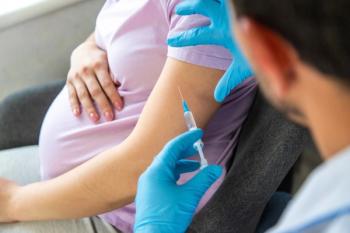
The fallout from COVID-19 for children and families
A session on what was learned from the COVID-19 pandemic and how to “pandemic-proof” children and families from future health disasters was presented at the 2023 Pediatric Academic Societies meeting.
While the public health emergency declared for COVID-19 officially ends on May 11, many challenges remain in the wake of this global pandemic, particularly when it comes to children and their families. At their presentation, “The long-term effects of the COVID-19 pandemic on children and families,” Tina Cheng, MD, MPH, professor of Pediatrics, University of Cincinnati, Ohio; Nia Heard-Garris, MD, MSc, assistant professor of Pediatrics, Ann & Robert H. Lurie Children’s Hospital of Chicago, Illinois; Joseph Wright, MD, MPH, chief health equity officer, University of Maryland Medical System, Baltimore; and Marci Ybarra, associate professor, Sandra Rosenbaum School of Social Work, University of Wisconsin, Madison shared the results of a report, “Addressing the long-term effects of the COVID-19 pandemic on children and families,” just published from the National Academies of Science, Engineering, and Medicine.
During the pandemic, over 15 million children tested positive for COVID-19, thousands were hospitalized and more than 2100 died. The pandemic, as has been noted before, disproportionately affected Black, Latino, and Native American families. Caregiver deaths affected 1 in 753 deaths of White children, 1 in 412 Latino children, 1 in 310 Black children, and 1 in 168 Native American children.
The pandemic played a significant part in behavior and mental health issues among children and caregivers, notably:
--increases in children’s dysregulated, internalizing, and externalizing behaviors
--decreases in children’s self-regulation skills and adaptive behaviors
--increases in parental stress, domestic chaos, challenges in caregiver mental health and parent/child conflict
--increased feelings of sadness and depression in adolescents
In academics, there have been declines in early childhood program and K-12 enrollments; decreased engagement in public schools, with 72% of these schools reporting higher absenteeism, and decreased literacy scores, particularly for Black children (27% to 54%) and Latino children (34% to 59%).
Additionally, there was a 33% increase in maternal mortality ( largest increases were for Black and Latino women); increased incidence of T1 and T2 diabetes among children; and depression and anxiety symptoms increasing among young people. Child abuse and neglect also increased during the early months of the pandemic, as well as intimate partner violence, community violence (gun violence rates were 30% higher during the first year of the pandemic), and suicides and suicidal ideation among people aged 18 to 24 years.
To address these sobering issues, several recommendations are proposed in the report. They include:
--Expand Medicaid coverage at the federal level so that children and families have consistent access to affordable physical and mental health services
--Ask the US Department of Health and Human Services to advance policies of funding to ensure children and families have access to treatment and preventive behavioral health services in all settings
--Strengthen the child behavioral workforce by increasing implementation of training programs
--Establish a government task force to address the effects of COVID-19 on children and families, with a focus on Black, Latino, and Native American families with low incomes.
--Have federal and state agencies involved in planning for future public health disasters to address the needs of pregnant people, children, low-income, and ethnically marginalized populations
--Renew, through the US Department of Education, pandemic-related funding to allow a greater proportion for high-poverty schools and include funding in early education for academic reengagement, expansion of educational workforce, and preparation for the next pandemic.
Other recommendations included greater support of federal paid family leave and sick leave programs; a reissue of pandemic-era expansion of the Child Tax credit; and a call for federal agencies to prioritize and fund rigorous research on the effects of the pandemic on children and families.
Presenters acknowledged several federal responses already in place as a result of the pandemic. Among them: the Families First Coronavirus Response Act, where enrollment in Medicaid and CHIP increased by 19.3 million people; the 3 rounds of economic stimulus payments; the American Rescue Plan, which expanded the Child Tax Credit to monthly payments; and the expansion of the Supplemental Nutrition Assistance Program.
Reference
Cheng T, Heard-Garris N, Wright J, Ybarra M. The long-term effects of the COVID-19 pandemic on children and families. The 2023 Pediatric Academic Societies, Meeting, April 27-May 1, Washington, DC.
Newsletter
Access practical, evidence-based guidance to support better care for our youngest patients. Join our email list for the latest clinical updates.








